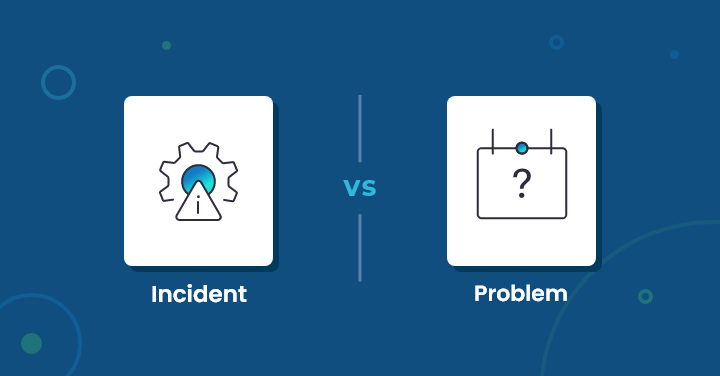Introduction
In large enterprises, every second counts. A minor delay in resolving an incident can ripple across teams, impact customers, and in some industries, even create financial or compliance risks. That is why Service Level Agreements (SLAs) are not just contractual terms, but the foundation of trust between IT teams and the business.
SLAs define the expected service performance standards, such as how quickly an incident must be acknowledged, escalated, and resolved. For enterprises, consistently meeting these commitments is crucial for protecting business continuity, maintaining customer confidence, and avoiding penalties.
Yet, achieving SLA adherence is far more complex than it appears on paper. When thousands of tickets flood in daily, ranging from simple service requests to critical system outages, it becomes difficult for IT teams to handle them manually. Misrouted incidents, human delays, and inconsistent prioritization often lead to SLA breaches. Over time, this undermines operational efficiency and damages trust.
This is where automated incident management has emerged as a game changer. By embedding incident management automation into IT Service Management (ITSM) frameworks, enterprises can cut down resolution times, reduce errors, and proactively prevent issues. Automation does not replace IT teams. Instead, it empowers them to focus on what matters most, while ensuring SLA timelines are met consistently.
The SLA Challenge in Large Enterprises
Large enterprises operate in an environment defined by scale, diversity, and complexity. They manage hybrid IT ecosystems that combine on-premises infrastructure, cloud platforms, microservices, and external vendor systems. In such a setting, even small disruptions can snowball into larger problems.
One of the biggest hurdles is ticket volume. A global enterprise service desk may receive thousands of incident tickets each day. Sorting through them manually takes time, and this time often eats into SLA clocks. When high-impact issues get buried under low-priority tickets, critical SLAs are missed.
Another issue lies in routing and escalation delays. Manual processes often mean tickets are misclassified or sent to the wrong team. By the time they reach the right experts, resolution times have already slipped.
There is also the problem of inconsistency. Different teams may interpret SLA rules differently, or may not have visibility into deadlines. Without clear escalation workflows and real-time monitoring, many incidents fall through the cracks.
Add to this the human factor. Manual processes are prone to error, fatigue, and delays, especially when IT teams are stretched thin. What starts as a small oversight can result in missed SLAs, downtime, and unhappy stakeholders.
In short, traditional incident management struggles to keep up with the scale and complexity of modern enterprise operations.
What is Automated Incident Management?
Automated incident management is the use of advanced tools, AI, and workflow automation to streamline the lifecycle of IT incidents. Instead of relying on humans to classify, prioritize, and escalate every ticket, automation ensures these steps happen instantly and intelligently.
Within the ITSM framework, automated incident management covers several important functions:
- Automated ticket creation and categorization: A robust Ticket Management System automatically logs, classifies, and routes incidents raised through monitoring tools or end-user reports, ensuring nothing falls through the cracks.
- Smart ticket assignment: Tickets are routed to the right teams or individuals based on expertise, workload, and availability.
- Prioritization and escalation: Incidents that impact business-critical services are automatically prioritized and escalated for urgent resolution.
- Workflow automation: Routine tasks such as password resets, access approvals, or server restarts are resolved automatically without human involvement.
- Analytics and SLA monitoring: Dashboards provide real-time visibility into SLA performance, making it easier to take corrective action before deadlines are breached.
Automation does not mean replacing IT staff. Instead, it removes repetitive tasks from their workload, reduces errors, and allows them to concentrate on higher-level problem solving and innovation.
How Automation Improves SLA Adherence
The biggest reason enterprises adopt incident management automation is its direct impact on SLA compliance. By cutting delays at every stage of the incident lifecycle, automation ensures SLA timelines are consistently met.
1. Faster ticket triage and routing
Incidents are instantly categorized and assigned, reducing response times from hours to minutes. This ensures no ticket gets stuck in a queue waiting for human intervention.
2. Smarter prioritization
Business-critical incidents, such as outages or security breaches, are given immediate attention. Automation ensures that IT teams always focus first on incidents with the highest business impact.
3. Reduced manual overhead
Tasks that once required manual effort, such as escalating a ticket or notifying stakeholders, now happen automatically. This speeds up resolution while eliminating human error.
4. Proactive prevention with AI
By analyzing historical data, AI identifies recurring issues and predicts potential incidents before they cause SLA breaches. For example, if a server shows signs of stress, an alert can be raised automatically.
5. Structured escalation
Escalation rules are predefined within the system, so tickets are automatically moved to senior teams if they remain unresolved. This prevents last-minute escalations that often miss SLA deadlines.
When all of these elements come together, enterprises see significant improvement in MTTR (Mean Time to Resolve) and a noticeable reduction in SLA breaches.
Key Benefits for Large Enterprises
The advantages of ITSM incident management automation extend beyond simply meeting SLA numbers. For large organizations, automation drives broader business outcomes:
- Consistency across teams: Whether incidents occur in Europe, Asia, or North America, automation ensures that SLA processes are applied uniformly.
- Improved MTTR and reduced downtime: Faster triage and resolution keep critical systems available, reducing business disruption.
- Stronger customer trust: Meeting SLA commitments consistently enhances brand reputation and builds long-term confidence.
- Regulatory and contractual compliance: Many industries have strict SLA-related obligations. Automation helps ensure enterprises remain compliant with these requirements.
- Operational efficiency: By eliminating repetitive tasks, IT staff gain more time to focus on innovation, optimization, and strategic projects.
In essence, automation transforms SLA adherence from a reactive struggle into a proactive strength.
Real-World Use Cases
Automation is not theoretical. Enterprises across industries are already leveraging it to improve SLA performance:
- Banking and Financial Services: A bank experiencing an online transaction outage uses automated escalation to immediately involve the right teams, reducing downtime and avoiding both financial losses and regulatory penalties.
- Telecommunications: Telecom providers face overwhelming ticket volumes during network disruptions. Automation helps them categorize and prioritize issues instantly, keeping SLA commitments intact despite high pressure.
- Manufacturing: A production line cannot afford downtime. Automated monitoring detects potential system failures early and triggers corrective workflows, minimizing disruption and safeguarding productivity.
These examples show that incident management automation directly contributes to business continuity and customer satisfaction.
Best Practices for Implementing Automated Incident Management
While the benefits are clear, successful implementation requires careful planning. Enterprises should consider the following best practices:
1. Define SLA policies clearly
Establish clear metrics for response and resolution times, along with well-documented escalation rules.
2. Integrate with monitoring tools
Connect automation to AIOps platforms, network monitoring systems, and observability tools to enable proactive detection and response.
3. Use real-time dashboards
Analytics dashboards give IT leaders instant visibility into SLA compliance, ticket trends, and performance gaps.
4. Train IT staff effectively
Automation works best when staff understand and trust the system. Training ensures smooth adoption and collaboration between humans and automation.
5. Start small, scale fast
Begin by automating repetitive, high-volume tasks like password resets or access requests. Once successful, expand to more complex scenarios.
Conclusion
For large enterprises, SLA adherence is more than just a metric. It reflects operational discipline, customer trust, and business resilience. Yet manual processes cannot keep up with the scale and complexity of today’s IT environments.
By embracing automated incident management, enterprises gain a smarter, faster, and more consistent way to handle incidents. Automation ensures SLAs are met not just occasionally, but consistently, across teams and geographies. It improves MTTR, reduces downtime, enhances compliance, and ultimately strengthens the enterprise’s reputation.
The future of IT operations belongs to those who can combine human expertise with intelligent automation. Enterprises that adopt incident management automation today will be the ones best equipped to thrive in tomorrow’s fast-paced digital landscape.






